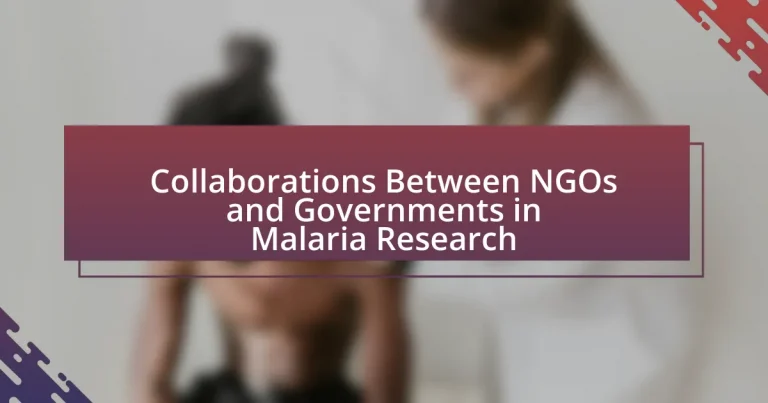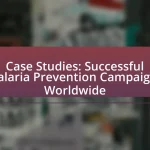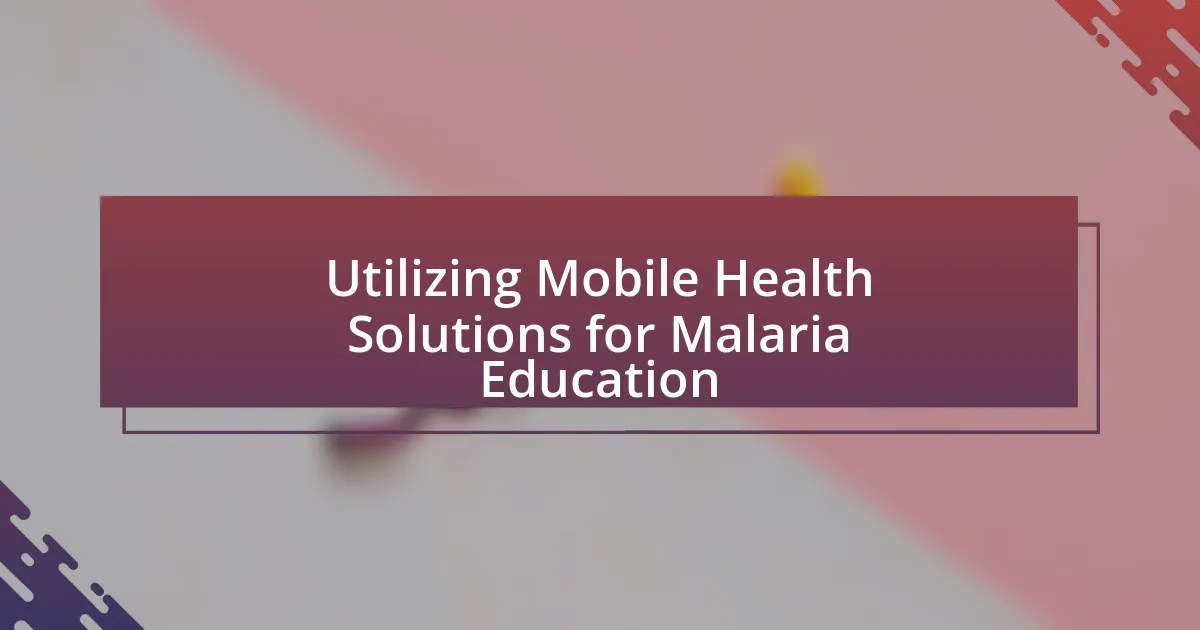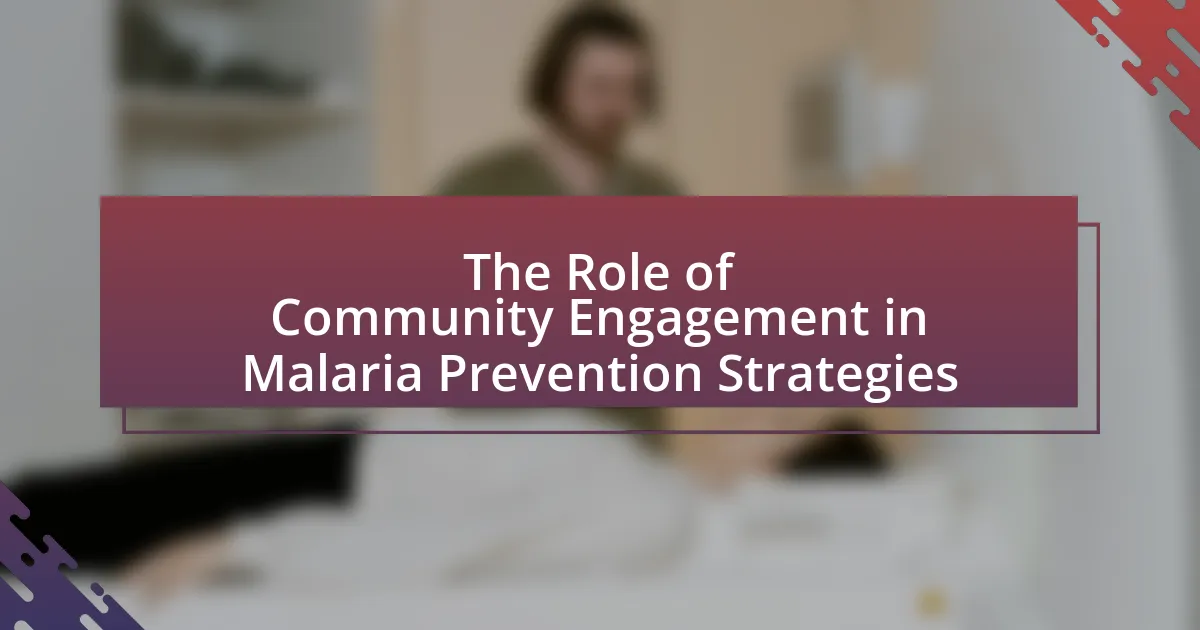Collaborations between non-governmental organizations (NGOs) and governments play a critical role in malaria research, focusing on joint efforts to combat the disease through funding, resource sharing, and knowledge exchange. These partnerships, exemplified by initiatives like the Roll Back Malaria Partnership, enhance research capabilities and lead to effective prevention and treatment strategies. The article explores the roles of NGOs and governments in these collaborations, the importance of joint efforts in reducing malaria incidence, and the challenges faced, such as communication barriers and funding issues. Additionally, it highlights successful examples of collaboration and best practices that can improve future partnerships in malaria research.
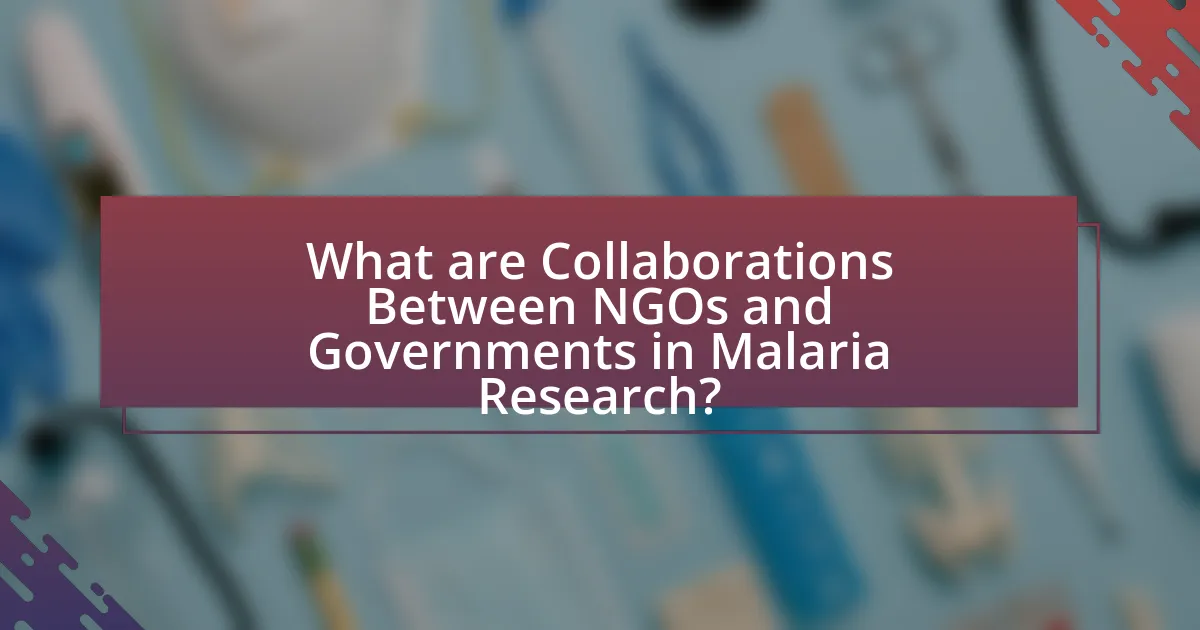
What are Collaborations Between NGOs and Governments in Malaria Research?
Collaborations between NGOs and governments in malaria research involve joint efforts to combat malaria through funding, resource sharing, and knowledge exchange. These partnerships often lead to the development of effective prevention and treatment strategies, as evidenced by initiatives like the Roll Back Malaria Partnership, which unites various stakeholders, including the World Health Organization and numerous NGOs, to reduce malaria incidence globally. Such collaborations enhance research capabilities, facilitate field studies, and promote the implementation of innovative solutions, ultimately contributing to the global fight against malaria.
How do NGOs and governments typically collaborate in malaria research?
NGOs and governments typically collaborate in malaria research through partnerships that leverage resources, expertise, and data sharing. These collaborations often involve joint funding initiatives, where NGOs provide financial support and technical expertise, while governments contribute regulatory frameworks and access to public health data. For instance, the Roll Back Malaria Partnership, which includes various NGOs and government entities, exemplifies such collaboration by coordinating efforts to reduce malaria incidence through shared research and intervention strategies. This partnership model enhances the effectiveness of malaria control programs by combining the strengths of both sectors, leading to improved outcomes in malaria prevention and treatment.
What roles do NGOs play in malaria research collaborations?
NGOs play crucial roles in malaria research collaborations by facilitating funding, conducting field research, and promoting community engagement. They often provide financial resources that support various research initiatives, enabling scientists to explore new treatments and prevention strategies. For instance, organizations like the Global Fund have invested billions in malaria control efforts, which include research funding. Additionally, NGOs conduct field studies that gather essential data on malaria transmission and treatment efficacy, contributing to evidence-based policy-making. They also engage local communities to raise awareness and ensure participation in research activities, which is vital for the success of malaria interventions. This multifaceted involvement enhances the overall effectiveness of malaria research and control efforts.
What roles do governments play in malaria research collaborations?
Governments play a crucial role in malaria research collaborations by providing funding, establishing policies, and facilitating partnerships between various stakeholders. They allocate financial resources to support research initiatives, which is essential for developing new treatments and prevention strategies. For instance, the Global Fund to Fight AIDS, Tuberculosis and Malaria has invested billions in malaria control efforts, demonstrating the financial commitment of governments. Additionally, governments create regulatory frameworks that guide research practices and ensure ethical standards are met. They also collaborate with NGOs, academic institutions, and international organizations to enhance research capacity and share data, which is vital for effective malaria control. This collaborative approach is evidenced by initiatives like the Roll Back Malaria Partnership, where governments work alongside NGOs to implement evidence-based strategies.
Why are collaborations important in the fight against malaria?
Collaborations are crucial in the fight against malaria because they enhance resource sharing, expertise, and coordinated efforts, leading to more effective interventions. For instance, partnerships between NGOs and governments facilitate the pooling of financial resources, which is essential for large-scale malaria prevention and treatment programs. According to the World Health Organization, collaborative initiatives have resulted in a significant reduction of malaria cases, with a 29% decrease in global malaria incidence between 2010 and 2019, demonstrating the effectiveness of joint efforts in combating the disease.
What are the benefits of joint efforts between NGOs and governments?
Joint efforts between NGOs and governments enhance the effectiveness of malaria research and intervention strategies. These collaborations leverage the strengths of both sectors; NGOs often bring grassroots knowledge and community engagement, while governments provide regulatory support and funding. For instance, the World Health Organization reported that partnerships between NGOs and government entities have led to increased access to malaria treatment and prevention measures, resulting in a significant reduction in malaria cases in regions like sub-Saharan Africa. This synergy not only improves resource allocation but also fosters innovation in research methodologies, ultimately leading to more effective solutions against malaria.
How do collaborations enhance research outcomes in malaria?
Collaborations between NGOs and governments enhance research outcomes in malaria by pooling resources, expertise, and data, leading to more comprehensive studies. For instance, joint efforts can facilitate large-scale clinical trials that are crucial for evaluating new treatments and interventions. A notable example is the collaboration between the World Health Organization and various NGOs, which has resulted in significant advancements in malaria vaccine development, such as the RTS,S vaccine, which demonstrated a 46% efficacy in preventing malaria in young children during trials. These partnerships also enable the sharing of best practices and innovative approaches, ultimately accelerating the pace of research and improving public health responses to malaria.
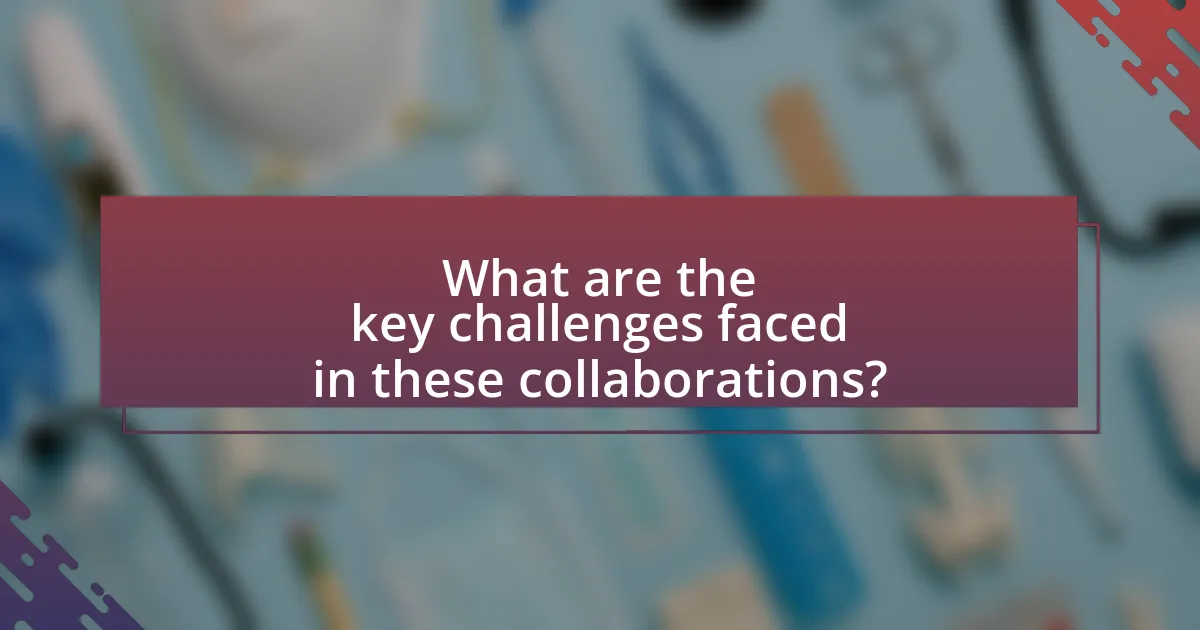
What are the key challenges faced in these collaborations?
The key challenges faced in collaborations between NGOs and governments in malaria research include differing priorities, communication barriers, and resource allocation issues. Differing priorities often arise because NGOs may focus on immediate community needs while governments may prioritize broader public health policies. Communication barriers can stem from varying organizational cultures and terminologies, leading to misunderstandings and inefficiencies. Resource allocation issues frequently occur due to limited funding and differing expectations regarding contributions, which can hinder project implementation and sustainability. These challenges are documented in studies such as “Partnerships for Health: The Role of NGOs in Health Systems” by Smith et al., highlighting the complexities of aligning goals and managing collaborative efforts effectively.
What obstacles hinder effective collaboration between NGOs and governments?
Obstacles that hinder effective collaboration between NGOs and governments include differing priorities, lack of trust, and bureaucratic inefficiencies. NGOs often focus on immediate community needs and innovative solutions, while governments may prioritize broader policy goals and regulatory frameworks. This divergence can lead to misaligned objectives and ineffective partnerships. Additionally, a history of mistrust between NGOs and government entities can create barriers to open communication and collaboration. Bureaucratic inefficiencies, such as slow decision-making processes and complex regulations, further complicate joint efforts, making it difficult for both parties to respond swiftly to malaria research needs. These factors collectively impede the potential for successful collaborations in addressing malaria.
How do funding issues impact malaria research collaborations?
Funding issues significantly hinder malaria research collaborations by limiting the resources available for joint projects. Insufficient funding can lead to reduced capacity for NGOs and governments to engage in collaborative efforts, resulting in fewer research initiatives and slower progress in malaria control. For instance, a study published in the Lancet Global Health highlighted that funding shortfalls have led to the cancellation of critical research projects, directly impacting the development of new malaria treatments and prevention strategies. Additionally, when funding is inconsistent, it creates uncertainty that can deter long-term partnerships, as organizations may hesitate to commit to collaborative efforts without guaranteed financial support.
What are the communication barriers in NGO-government partnerships?
Communication barriers in NGO-government partnerships include differences in organizational culture, lack of trust, and varying priorities. These barriers often stem from NGOs and government entities having distinct operational frameworks and objectives, which can lead to misunderstandings and misalignment in goals. For instance, NGOs may prioritize community engagement and grassroots solutions, while government agencies might focus on policy compliance and broader regulatory frameworks. Additionally, a lack of trust can hinder open dialogue, as NGOs may perceive government motives as bureaucratic or self-serving, while governments may view NGOs as lacking accountability. Research indicates that these barriers can significantly impact the effectiveness of collaborative efforts, particularly in complex fields like malaria research, where coordinated action is essential for success.
How can these challenges be overcome?
To overcome challenges in collaborations between NGOs and governments in malaria research, establishing clear communication channels is essential. Effective communication fosters mutual understanding of goals, resources, and expectations, which can mitigate misunderstandings and conflicts. For instance, the World Health Organization emphasizes that structured partnerships enhance the efficiency of malaria interventions by aligning strategies and sharing data. Additionally, creating joint funding mechanisms can address financial constraints, as evidenced by successful initiatives like the Global Fund, which pools resources from multiple stakeholders to combat malaria. These strategies not only facilitate collaboration but also enhance the overall impact of malaria research efforts.
What strategies can improve collaboration effectiveness?
To improve collaboration effectiveness between NGOs and governments in malaria research, establishing clear communication channels is essential. Effective communication fosters transparency and ensures that all stakeholders are aligned on objectives, roles, and responsibilities. Research indicates that regular meetings and updates can enhance understanding and trust among partners, which is crucial for successful collaboration. Additionally, leveraging technology for real-time data sharing can streamline processes and improve decision-making. A study published in the “Global Health Action” journal highlights that collaborative platforms significantly increase the efficiency of information exchange, leading to better outcomes in public health initiatives.
How can trust be built between NGOs and governments?
Trust can be built between NGOs and governments through transparent communication and collaborative initiatives. Establishing regular dialogue allows both parties to share goals, expectations, and concerns, fostering mutual understanding. Joint projects, particularly in malaria research, can demonstrate commitment to shared objectives, as evidenced by successful partnerships like the Roll Back Malaria Partnership, which has improved coordination and resource allocation among stakeholders. Additionally, involving local communities in decision-making processes enhances credibility and accountability, further solidifying trust.
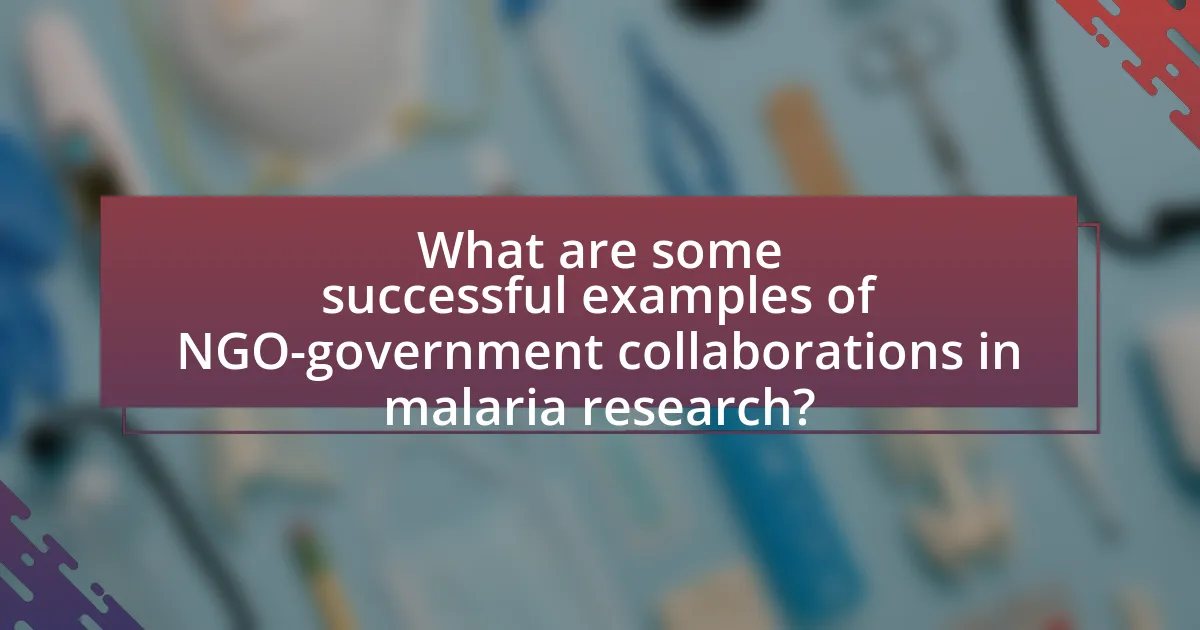
What are some successful examples of NGO-government collaborations in malaria research?
Successful examples of NGO-government collaborations in malaria research include the partnership between the Global Fund and various national governments, which has significantly increased funding and resources for malaria control programs. For instance, in Nigeria, the Global Fund collaborated with the Nigerian government to implement the “National Malaria Strategic Plan,” resulting in a 50% reduction in malaria prevalence between 2010 and 2018. Another example is the collaboration between Médecins Sans Frontières (MSF) and the Ministry of Health in Mozambique, which focused on community-based malaria treatment and prevention, leading to improved access to care and a notable decrease in malaria-related mortality rates. These collaborations demonstrate the effectiveness of joint efforts in addressing malaria through shared resources and expertise.
What notable projects illustrate effective collaborations?
The notable projects that illustrate effective collaborations between NGOs and governments in malaria research include the Roll Back Malaria Partnership and the Malaria Vaccine Initiative. The Roll Back Malaria Partnership, established in 1998, unites various stakeholders, including governments, NGOs, and international organizations, to reduce malaria morbidity and mortality through coordinated efforts and resource sharing. The Malaria Vaccine Initiative, supported by the PATH organization, collaborates with governments and research institutions to develop and distribute malaria vaccines, exemplifying successful public-private partnerships. These projects demonstrate how collaborative frameworks can enhance research, funding, and implementation strategies, leading to significant advancements in malaria control and prevention.
How did these collaborations impact malaria research outcomes?
Collaborations between NGOs and governments significantly enhanced malaria research outcomes by facilitating resource sharing, expertise exchange, and coordinated efforts in data collection and analysis. These partnerships led to the development of innovative interventions, such as the introduction of rapid diagnostic tests and effective treatment protocols, which have been shown to reduce malaria incidence rates. For instance, the Roll Back Malaria Partnership, which includes various NGOs and governmental bodies, has contributed to a 29% decrease in malaria mortality rates globally since 2000, demonstrating the effectiveness of collaborative strategies in addressing the disease.
What lessons can be learned from successful partnerships?
Successful partnerships in malaria research between NGOs and governments demonstrate the importance of clear communication and shared goals. Effective collaboration hinges on establishing mutual objectives, which fosters trust and aligns efforts towards combating malaria. For instance, the partnership between the Global Fund and various governments has led to significant reductions in malaria cases, showcasing how coordinated strategies can yield measurable health outcomes. Additionally, leveraging diverse resources and expertise enhances innovation and efficiency, as seen in initiatives like the Roll Back Malaria Partnership, which combines funding, research, and community engagement to address malaria effectively. These examples illustrate that successful partnerships are built on transparency, resource sharing, and a unified vision for public health.
What best practices can be derived from these examples?
Best practices derived from collaborations between NGOs and governments in malaria research include establishing clear communication channels, fostering mutual trust, and aligning goals. Clear communication ensures that all stakeholders understand their roles and responsibilities, which enhances project efficiency. Mutual trust between NGOs and governments facilitates knowledge sharing and resource allocation, leading to more effective interventions. Aligning goals ensures that both parties work towards common objectives, maximizing the impact of malaria research initiatives. These practices are supported by successful case studies where effective collaboration has led to significant reductions in malaria incidence, demonstrating the importance of structured partnerships in public health efforts.
How can these best practices be applied to future collaborations?
Best practices in collaborations between NGOs and governments in malaria research can be applied to future collaborations by establishing clear communication channels, defining roles and responsibilities, and setting measurable goals. Clear communication ensures that all stakeholders are aligned on objectives and expectations, which is crucial for effective collaboration. Defining roles and responsibilities helps to avoid overlap and confusion, allowing each party to contribute their expertise efficiently. Setting measurable goals enables the evaluation of progress and outcomes, fostering accountability and continuous improvement. For instance, a study by the World Health Organization highlights that structured partnerships with defined roles lead to more effective malaria control strategies, demonstrating the importance of these best practices in achieving successful outcomes.
What practical steps can NGOs and governments take to enhance their collaborations in malaria research?
NGOs and governments can enhance their collaborations in malaria research by establishing joint funding initiatives that pool resources for shared research goals. This approach allows for the efficient allocation of financial resources, enabling larger-scale studies and the development of innovative solutions. For instance, the Global Fund to Fight AIDS, Tuberculosis and Malaria has successfully mobilized funding from various stakeholders, demonstrating the effectiveness of collaborative financial strategies in addressing health challenges. Additionally, creating formal partnerships through memoranda of understanding can clarify roles, responsibilities, and expectations, fostering a more structured collaboration. Regular stakeholder meetings and workshops can also facilitate knowledge sharing and align research priorities, ensuring that both NGOs and governments are working towards common objectives in malaria research.
